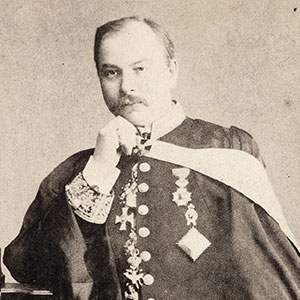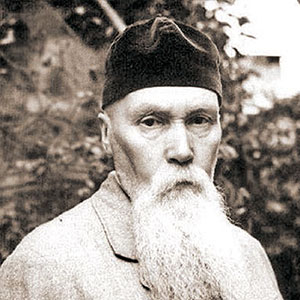In 2022, we will mark the 50th anniversary of the Convention concerning the Protection of the World Cultural and Natural Heritage. This Convention aimed to formally establish an international mechanism to identify, record, monitor and protect sites of outstanding universal value, serving as a cornerstone of the international system of monument protection.
One would think that the idea for a list of the most remarkable architectural and historical monuments would be a given. After all, it’s easy to recall various lists of the Wonders of the Ancient World and Middle Ages. Nevertheless, it took politicians and scientists a long time to unite the global community in the protection of world-renowned landmarks.
The identification of global heritage as an independent concept in international law is determined by two key factors: need and opportunity. The opportunity is the presence of an international community that can set certain rules, and the need is the awareness of the importance of heritage, the need to protect it from danger and preserve it for posterity.
The need to protect cultural heritage arose practically simultaneously with the creation of culture itself. Human creativity and the works of art have existed since ancient times. Primarily of a sacred nature, they were first valued by their communities and later by other peoples, while being constantly exposed to natural destructive forces. Dealing with natural disasters and their effects was extremely difficult. In fact, natural disasters were responsible for the loss of most wonders of the Ancient World, such as the Mausoleum of Halicarnassus, the Lighthouse of Alexandria, and the Colossus of Rhodes, which were all destroyed by earthquakes. A flood supposedly destroyed the Hanging Gardens of Babylon.
The human element has not been any kinder. During wars and conflicts, conquerors have always sought to destroy and plunder the cultural monuments of their enemy, both to undermine the enemy’s fighting spirit and for their own gain. Despite the humanist statements of some Greek philosophers, the general consensus at the time was that the victor had every right to destroy the monuments of the defeated country, as these were the rules of war.
The Age of Discovery significantly expanded communication channels and information exchange between populations and cultures. On the one hand, this resulted in repulsive acts of vandalism and enslavement, and on the other hand, it gave rise to the development of humanist ideas and an interest in cultural heritage as a relic of history and memory.
During the Renaissance, philosophers and lawyers began to discuss the wartime destruction of cultural monuments as an impermissible wrong. For example, Swiss lawyer and scholar of international public law, Emer de Vattel, wrote, “for whatever cause a country be devastated, these buildings should be spared which are an honour to the human race”. These monuments included temples, graves, public buildings, and structures of outstanding beauty.
Despite such declarations, colonial powers continued their policy of stealing the most valuable cultural objects from a region and bringing them to their own countries. The Napoleonic Wars of the late 18th-early 19th centuries were accompanied by unprecedented plundering in the conquered territories. Napoleon’s greed caused an unprecedented rise in national spirit and a movement for the protection of cultural heritage in the affected countries, including Russia, which for the first time was accompanied by the active restitution of cultural property.
In the second half of the 19th century, the issue of preserving cultural heritage often arose in the context of formalising wartime laws and customs. The Russian Empire played a special role in this process, initiating the Brussels Conference of 1874 and the Hague Peace Conferences of 1899 and 1907, during which time the laws and customs of war, particularly in relation to cultural values, were actively discussed.

The famous Russian international lawyer Friedrich Martens authored the Brussels Declaration concerning the Laws and Customs of War, which placed liability for the deliberate destruction or damage of cultural heritage on the belligerent party for the first time in international practice. Later, these same provisions formed the basis of the Hague Conventions respecting the Laws and Customs of War on Land.
By the end of the 19th century, a clear conclusion had been reached regarding the need to protect cultural heritage in the event of an armed conflict, both among individual humanist scientists and at the state level. However, at that time, there was no organised international community to officially recognise world value and ensure the protection of cultural heritage sites.
This global community only became possible in the 1920s with the establishment of the League of Nations, an international organisation and the predecessor of the UN. Finding itself in a difficult period between two world wars, the League of Nations did not pay much attention to cultural heritage. However, in the short time between the two most severe upheavals of the 20th century, a document emerged, featuring the ideological content and the driving force that would became the prototype for the Convention on the Protection of the World Cultural and Natural Heritage.
The famous Roerich Pact (Treaty on the Protection of Artistic and Scientific Institutions and Historical Monuments), dated April 15, 1935, was the first international treaty specifically for the protection of cultural heritage.

Spearheading this pact was our countryman, the famous artist and cultural figure, Nicholas Roerich. Major scientific and cultural leaders, such as Albert Einstein, Thomas Mann and H.G. Wells also expressed support for the initiative. The Roerich Pact was the first official document to address the need to protect and respect historical monuments and cultural institutions, both in times of peace and war. Unfortunately, however, the Pact was not distributed worldwide.
Ten years passed, along with the Second World War, the most destructive and ruthless force to ever threaten both people and cultural heritage. In 1945, the United Nations was created, including UNESCO. A full-fledged international community was established, ready to play by definitive rules. There was finally an opportunity to recognise and protect the value of world heritage.
In 1954, the Hague Convention for the Protection of Cultural Property in the Event of Armed Conflict was adopted. With this, it appeared that the likelihood of damage to cultural heritage from military action would be minimised. After all, how much damage could be inflicted on monuments during times of peace? As history would show, a lot.
Following events in Egypt, the global community would jump into action to advocate for the World Heritage Convention. When the Nasser government came to power after overthrowing the monarchy in the early 1950s, large infrastructure projects were needed to improve the welfare of the population. One of these projects was the construction of the Aswan Dam, which required flooding the ancient temples of Abu Simbel.
Post-revolutionary Egypt had neither the funds nor the specialists to carry out rescue operations on such large cultural heritage sites. The threat of the flooding and the subsequent loss of unique monuments rallied the entire world community. In 1964, an unprecedented 4-year rescue operation began. The success of the operation confirmed that, through joint efforts, it would be possible and necessary to save cultural monuments.
At the General Conference of UNESCO in 1972, the Convention concerning the Protection of the World Cultural and Natural Heritage was signed. This Convention has since become one of the most successful documents adopted under the auspices of the Organisation. Now, half a century later, the Convention holds strong, ensuring the global recognition of the man-made and natural heritage of different peoples and countries, as well as its preservation for future generations.
Likhachev Russian Research Institute for Cultural and Natural Heritage








